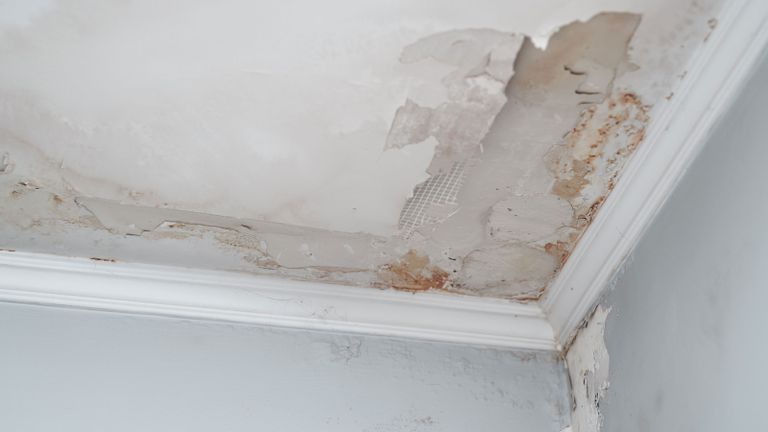Do's & Don'ts of Water Restoration.
Do's & Don'ts of Water Restoration.
Blog Article
We have uncovered this article about Reducing Your Risk Of Water And Fire Damage At Home listed below on the net and think it made sense to write about it with you here.

Though water gives life, water intrusion on parts where it's not supposed to be can result in damages. If the water saturates right into your framework, it can peel away surfaces and deteriorate the structure. Mold and also mold also thrive in a wet atmosphere, which can be harmful for your health and wellness. Homes with water damages odor stuffy as well as old.
Water can originate from lots of sources such as typhoons, floodings, burst pipelines, leaks, and also drain concerns. In case you experience water damages, it would certainly be great to recognize some security precautions. Right here are a few standards on how to take care of water damage.
Do Prioritize House Insurance Insurance Coverage
Water damage from flood as a result of heavy winds is seasonal. You can also experience an unexpected flooding when a faulty pipeline instantly bursts right into your residence. It would be best to have house insurance policy that covers both acts of God such as all-natural tragedies, and emergencies like damaged plumbing.
Do Not Neglect to Turn Off Energies
In case of a disaster, particularly if you reside in a flood-prone location, it would be recommended to shut off the major electric circuit. This removes power to your entire house, avoiding electrical shocks when water is available in as it is a conductor. Do not fail to remember to turn off the primary water line shutoff. Furniture will move around and create damages when floodwaters are high. Having the major shutoff shut down protects against more damages.
Do Stay Proactive and Heed Weather Alerts
Pay attention to evacuation cautions if you live near a creek, river, or lake. Doing so minimizes potential property damage.
Do Not Neglect the Roof
Before the climate turns terrible, make sure you have a roof covering evaluation. It would be prudent to obtain this service every year as it can mitigate complicated concerns. If there are no openings and leaks in your roof covering, you can stay clear of rain damages. Your contractor will additionally care for damaged seamless gutters or any other indications of weakening. This will certainly prevent water from streaming down your wall surfaces and also saturating your ceiling.
Do Focus On Tiny Leakages
A burst pipe does not take place over night. You may discover bubbling paint, peeling off wallpaper, water touches, water stains, or dripping audios behind the wall surfaces. Have your plumbing repaired before it results in massive damages.
Do Not Panic in Case of a Burst Pipe
Maintaining your clearheadedness is important in a time of crisis. Panicking will only compound the trouble due to the fact that it will stifle you from acting quickly. Timing is crucial when it comes to water damage. The longer you wait, the even more damage you can expect. Hence, if a pipe bursts in your residence, quickly turned off your main water shutoff to cut off the resource. After that unplug all electric outlets in the area or switch off the breaker for that part of the house. Lastly, call a respectable water damages remediation professional for support.
Water offers life, water intrusion on parts where it's not meant to be can result in damages. Homes with water damage odor moldy and also old.
Water damages from flood dues to heavy winds is seasonal. You might see bubbling paint, peeling wallpaper, water streaks, water spots, or trickling audios behind the wall surfaces. When it comes to water damages, timing is key.
Some Do's & Don't When Dealing with a Water Damage
DO:
Make sure the water source has been eliminated. Contact a plumber if needed. Turn off circuit breakers supplying electricity to wet areas and unplug any electronics that are on wet carpet or surfaces Remove small furniture items Remove as much excess water as possible by mopping or blotting; Use WHITE towels to blot wet carpeting Wipe water from wooden furniture after removing anything on it Remove and prop up wet upholstery cushions for even drying (check for any bleeding) Pin up curtains or furniture skirts if needed Place aluminum foil, saucers or wood blocks between furniture legs and wet carpet Turn on air conditioning for maximum drying in winter and open windows in the summer Open any drawers and cabinets affected for complete drying but do not force them open Remove any valuable art objects or paintings to a safe, dry place Open any suitcases or luggage that may have been affected to dry, preferably in sunlight Hang any fur or leather goods to dry at room temperature Punch small holes in sagging ceilings to relieve trapped water (don't forget to place pans beneath!); however, if the ceiling is sagging extremely low, stay out of the room and we'll take care of it DO NOT:
Leave wet fabrics in place; dry them as soon as possible Leave books, magazines or any other colored items on wet carpets or floor Use your household vacuum to remove water Use TV's or other electronics/appliances while standing on wet carpets or floors; especially not on wet concrete floors Turn on ceiling fixtures if the ceiling is wet Turn your heat up, unless instructed otherwise

We had been made aware of that editorial on 5 Home Safety Tips To Reduce The Risk Of Fire And Water Damage through a friend on our other web property. Liked our entry? Please share it. Help someone else locate it. Thank you so much for going through it.
Report this page